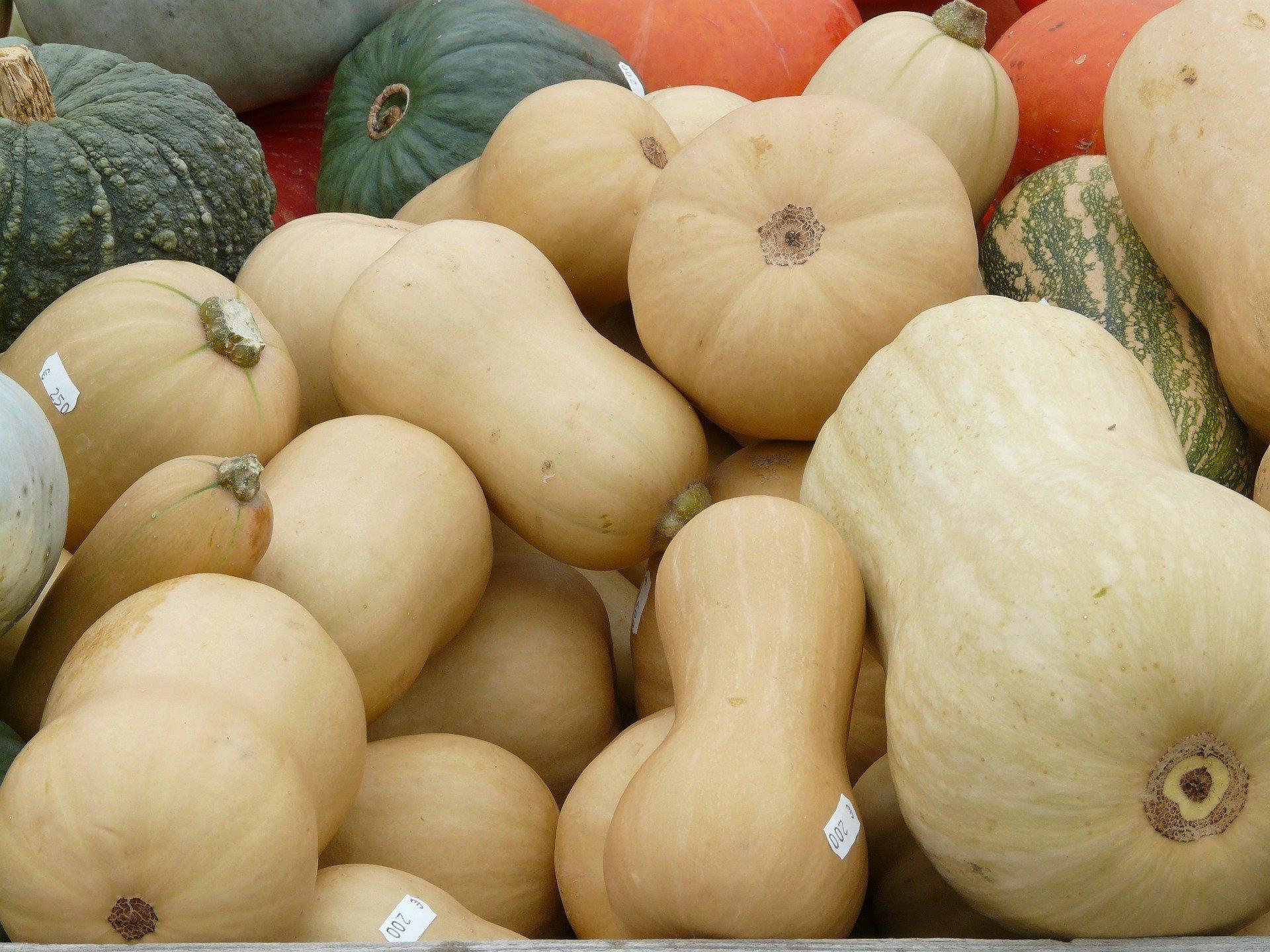Planting winter squash facts
- Hardiness: Very tender warm-season annual. Frost will injure top growth; needs warm weather to grow.
- Planting: Plant 2 to 3 seeds at a depth of 4 times the thickness of the seed after all danger of frost has passed and the soil has warmed. Or start transplants indoors by sowing seed in 3-inch diameter containers 3 weeks before planting time. Seed or transplants can be planted through black plastic or landscape fabric to hasten maturity. After seedlings emerge, remove all but the strongest one by pinching out or cutting excess plants rather than by pulling. Handle transplants gently and disturb the root system as little as possible. Although winter squash often requires more days than summer squash to ripen, you can still plant a second crop between June 15 and July 1. Full sun requires direct light at least 6 hours/day; prefers 8 - 10 hours/day.
- Days to maturity: 60-100 days.
- Spacing: Seeds should be planted every 3 ft. to 4 ft. apart in rows that are about 6 to 8 feet apart, depending on the type.
- Fertilizer needs: Medium-high requirement for nutrients, either from soil organic matter or fertilizers. Incorporate compost prior to planting and side-dress when fruits begin to form. Refer to Fertilizing Vegetables for details.
- Approximate yield: 10 to 20 pounds per 10-foot row.
Winter squash problems
Cucumber beetles
Downy mildew
Vegetables not true to type
Powdery mildew
Pollination problems
Squash beetle
Squash bug
Squash vine borer
Viruses
Growing and care of winter squash
- Winter squash differs from summer squash in that it is harvested and eaten in the mature fruit stage when the seeds within have matured fully and the skin has hardened into a tough rind. At this stage, most varieties of this fruit can be stored for use during the winter. It is generally cooked before eating.
- Winter squash grows on long vines and comes in many varieties and colors. Pumpkin, acorn squash, butternut squash, and buttercup squash are among the better-known types.
- If you have space limitations, you can also grow small-fruited winter squash on a trellis, but be prepared to support the fruit as it grows.
- Watering - Water deeply and regularly at the base of each plant, especially during hot, dry weather and once the first fruits start to form.
- Weeding - Remove all young weed seedlings by hand or with a hoe and use a mulch around plants to keep weed seeds from germinating.
Harvesting winter squash
- Winter squash is typically harvested in September or October before heavy frosts arrive.
- Use a sharp knife or pruning shears to cut squash from the vine, leaving about two inches of stem attached if possible. When harvesting pumpkins, leave 3 to 4 inches of stem attached to the fruit. Try to avoid cutting or bruising the fruit. The rinds need to be hard and firm for the squash to store well. Unlike summer squash which yields over a period of time, all of the fruits of winter squash plants are typically harvested around the same time.
Storage and preservation
- Stored winter squash in a dry area that stays between 50⁰ F. and 55⁰ F. If you need to store them for an extended period of time, place them in a single layer, preferably not touching each other, to reduce the chance of spreading rot.
